
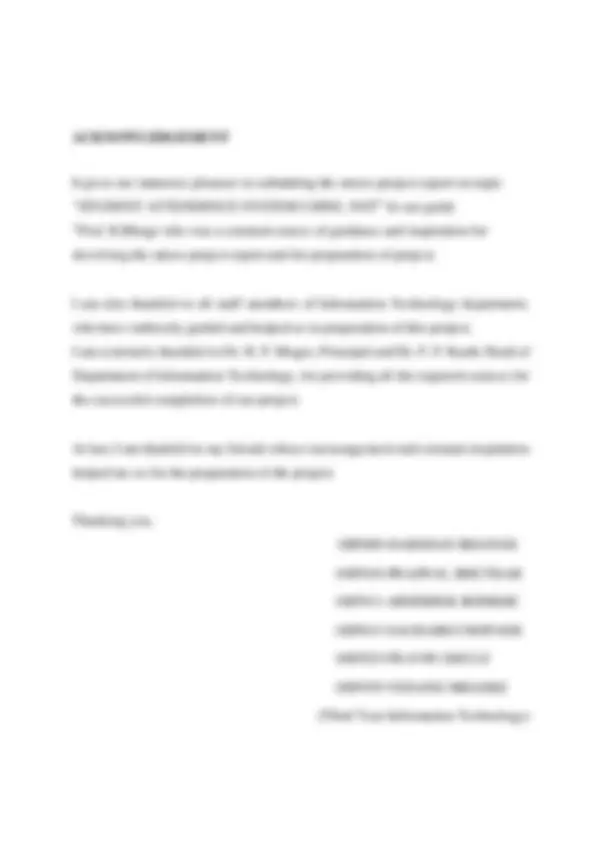
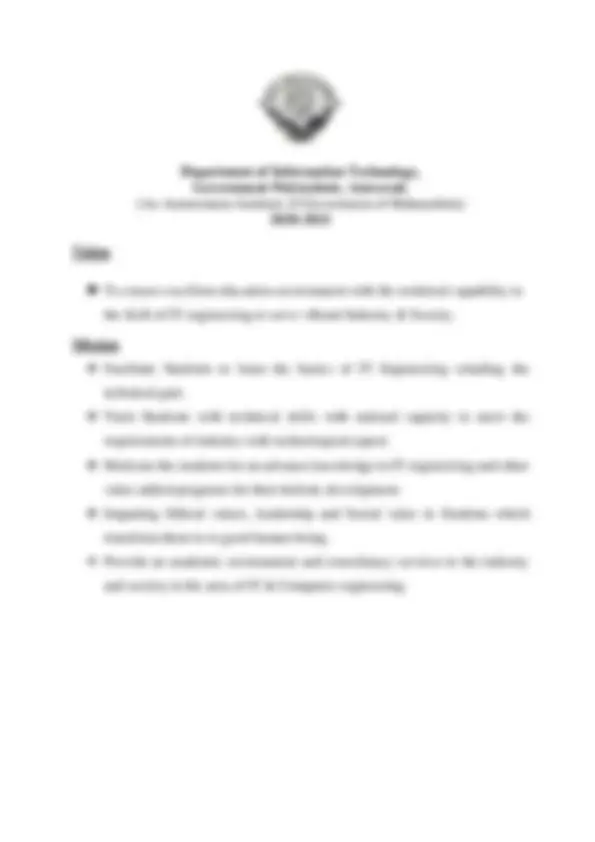
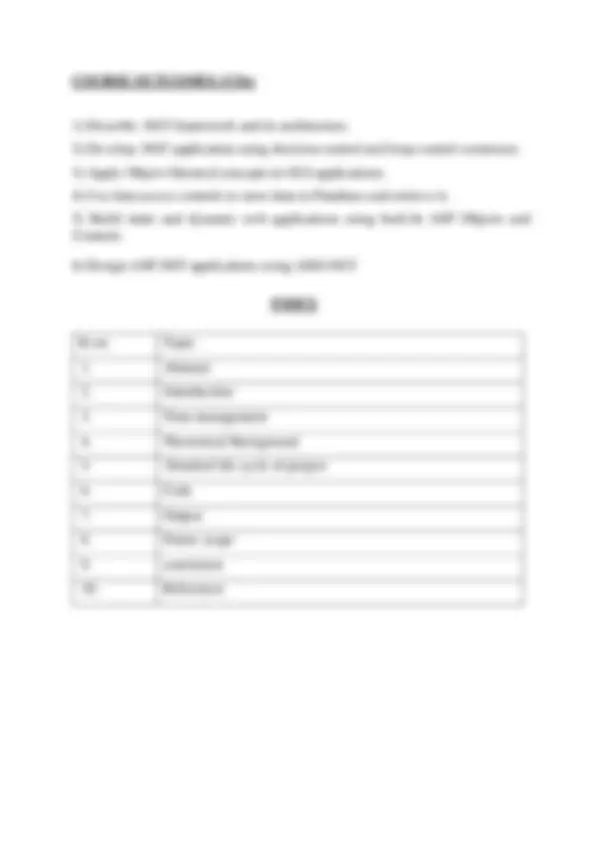
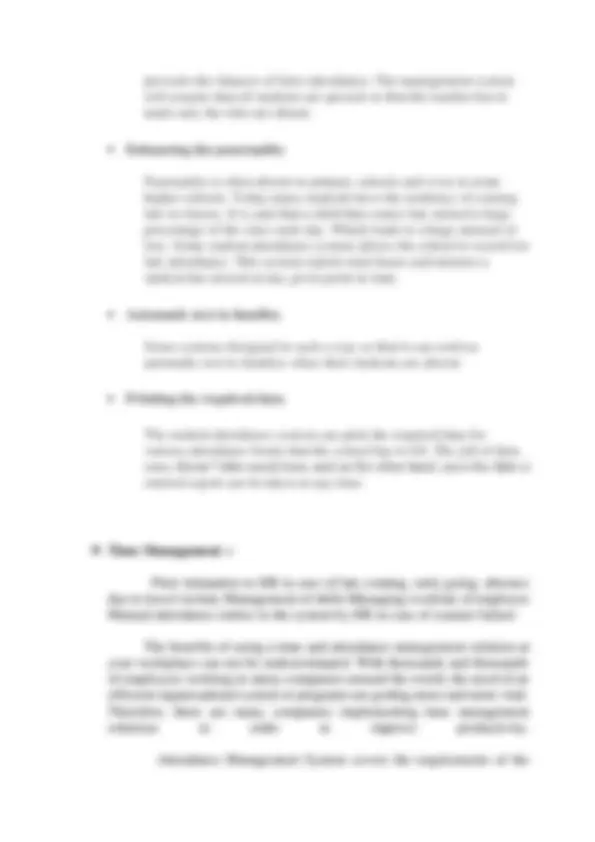
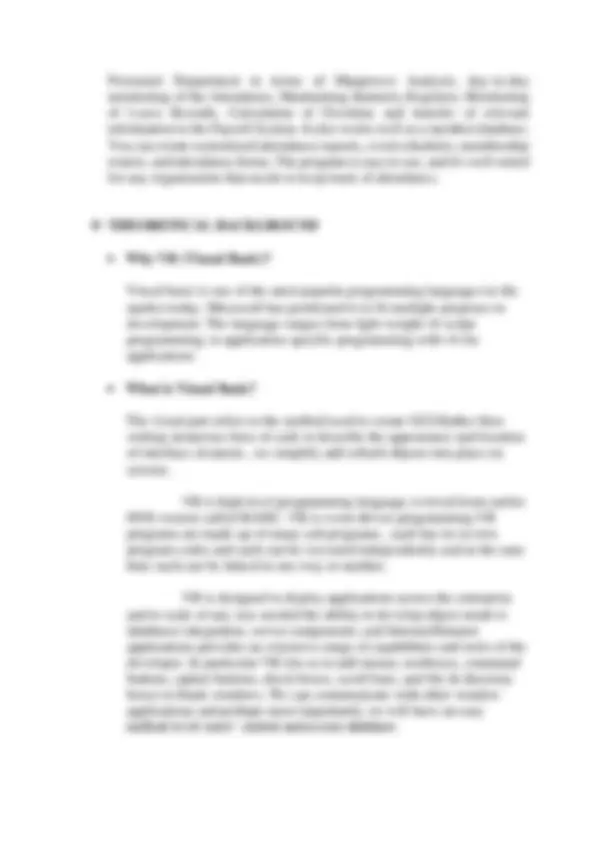
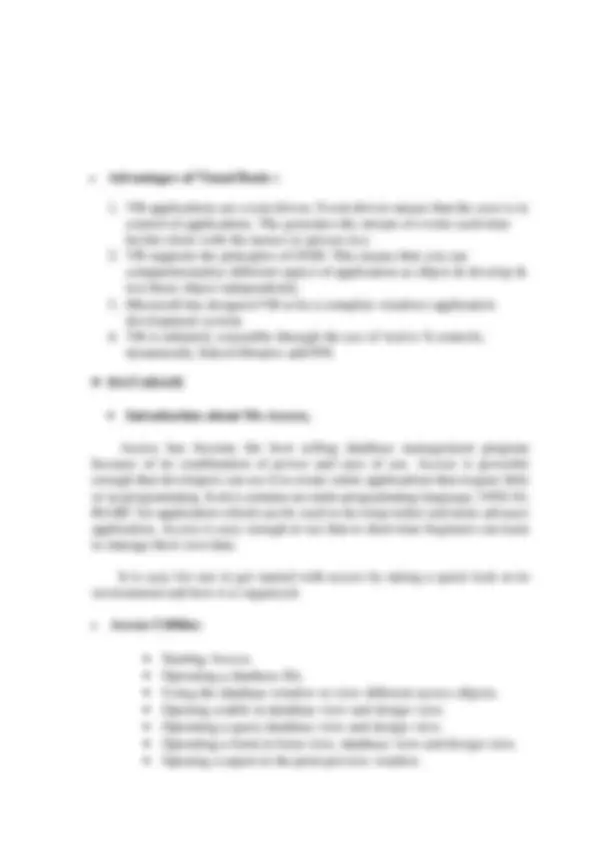
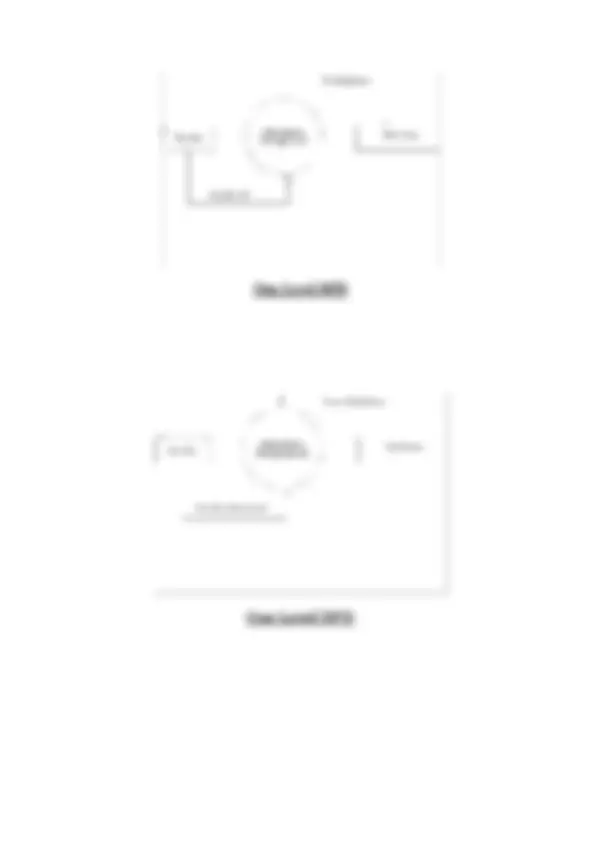
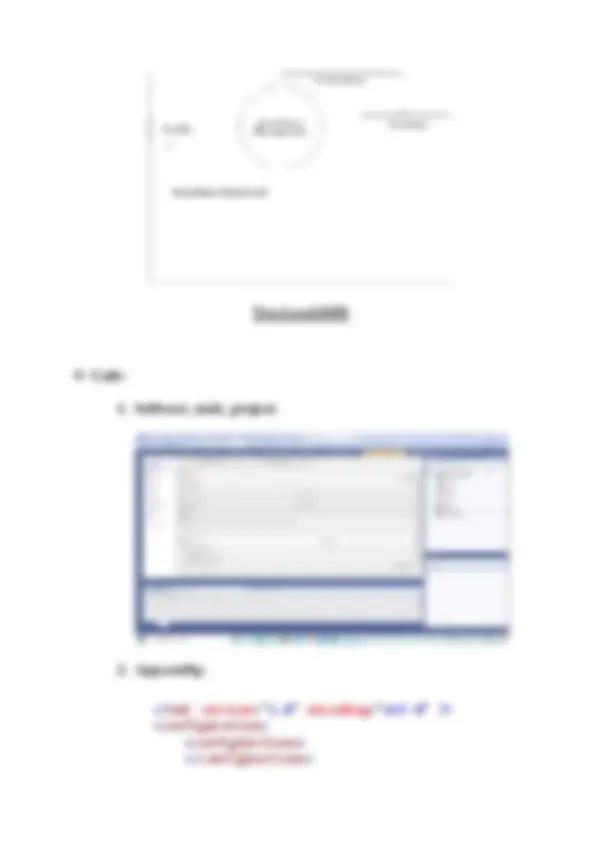
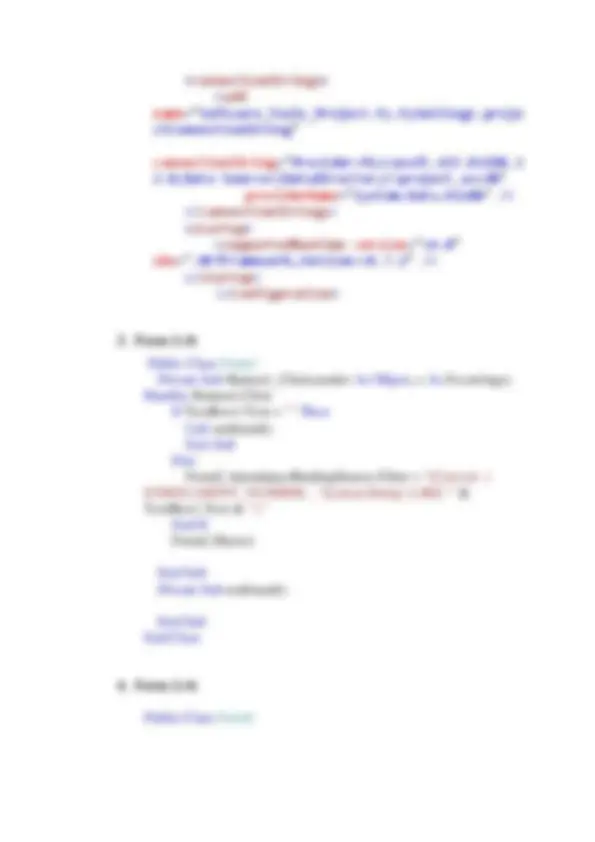
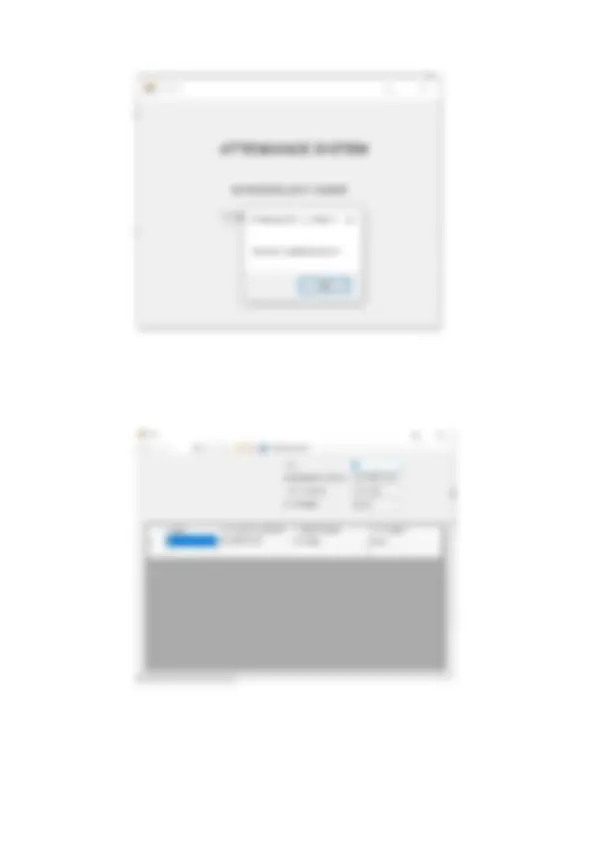
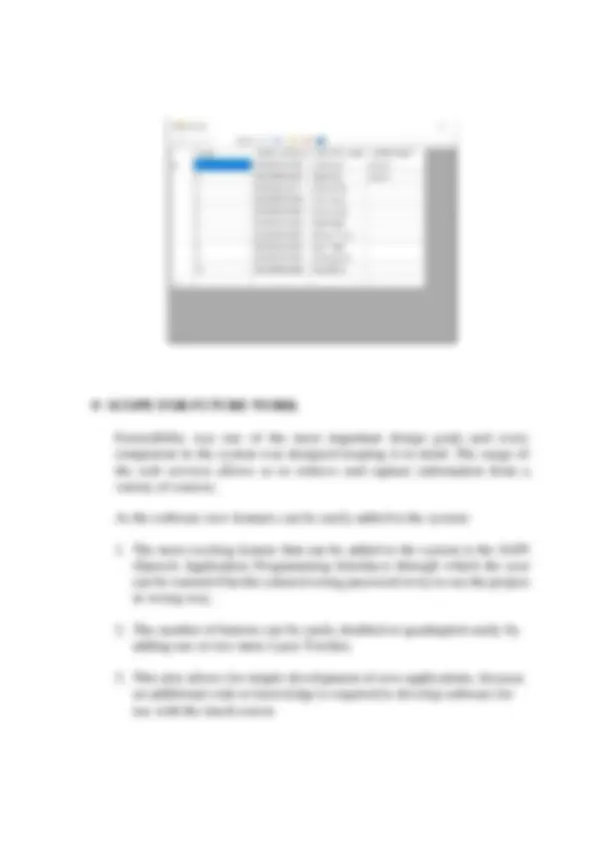
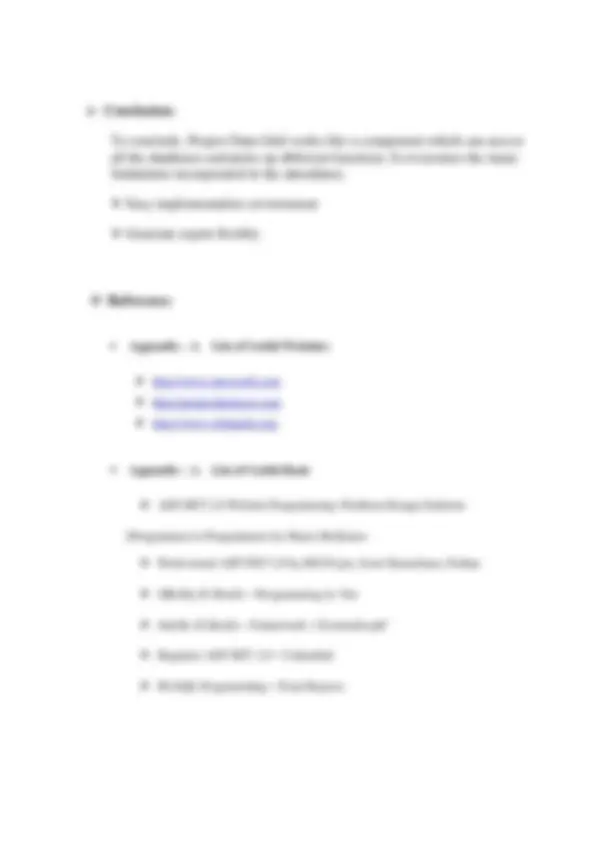


Study with the several resources on Docsity

Earn points by helping other students or get them with a premium plan


Prepare for your exams
Study with the several resources on Docsity

Earn points to download
Earn points by helping other students or get them with a premium plan
Community
Ask the community for help and clear up your study doubts
Discover the best universities in your country according to Docsity users
Free resources
Download our free guides on studying techniques, anxiety management strategies, and thesis advice from Docsity tutors
It us the project report on vb. Net
Typology: Lab Reports
1 / 20

This page cannot be seen from the preview
Don't miss anything!













Micro-Project Report On “STUDENT ATTENDENCE SYSTEM USING .NET“ Submitted for partial fulfilment of course FC3410-GUI APPLICATION DEVELOPMENT USING .NET of the Diploma Programme in Information Technology Submitted by – 18IF009-DARSHAN BHANGE 18IF010-PRAJWAL BHUTKAR 18IF011-ABHISHEK BODKHE 18IF015-SAURABH CHOPADE 18IF025-PRAVIN GHULE 18IF039-VEDANG MHASKE Under the Guidance of Prof. R.Bhoge Department of Information Technology, Government Polytechnic, Amravati. (An Autonomous Institute of Government of Maharashtra) 2020 - 2021
This is to certify that the Micro-project entitled “STUDENT ATTENDENCE SYSTEM USING .NET” is a bonafide work and it is submitted to the Government Polytechnic, Amravati. By, 18IF009-DARSHAN BHANGE 18IF010-PRAJWAL BHUTKAR 18IF01 1 - ABHISHEK BODKHE 18IF015-SAURABH CHOPADE 18IF025-PRAVIN GHULE 18IF039-VEDANG MHASKE in the partial fulfilment of the course course FC3410-GUI APPLICATION DEVELOPMENT USING .NET programming for the requirement of the Diploma in Information Technology, during the academic year 2020-2021 under my guidance. Department of Information Technology, Government Polytechnic, Amravati. (An Autonomous Institute of Government of Maharashtra) 2020 - 2021 Prof. Dr. P.P. Karde Head of Department Department of Information Technology Government Polytechnic Amravati. Prof. R.Bhoge Guide & Subject Teacher Department of Information Technology Government Polytechnic Amravati.
Department of Information Technology, Government Polytechnic, Amravati. (An Autonomous Institute of Government of Maharashtra) 2020 - 2021 Vision ❖ To ensure excellent education environment with the technical capability in the field of IT engineering to serve vibrant Industry & Society. Mission ❖ Facilitate Students to learn the basics of IT Engineering entailing the technical gain. ❖ Train Students with technical skills with rational capacity to meet the requirements of industry with technological aspect. ❖ Motivate the students for an advance knowledge in IT engineering and other value-added programs for their holistic development. ❖ Imparting Ethical values, leadership and Social value in Students which transform them in to good human being. ❖ Provide an academic environment and consultancy services to the industry and society in the area of IT & Computer engineering.
COURSE OUTCOMES (COs)
Attendance Management System is a software developed for daily student attendance in schools, colleges, and institutes. It facilitates to access the attendance information of a particular student in a particular class. The information is sorted by the operator, which will be provided by the lecturer or teacher for the particular class. This will also help in evaluating the attendance eligibility criteria of the student for exams. As for system development and implementation is concerned, it should help teachers or lecturers in managing their student attendance systematically. The system must have a database that contains a student or student information and it must help the lecturer or teacher to manipulate data, update the database, alert the manager as and when needed. ❖ Problem Definition This project is aimed to replace the traditional method of the attendance management system. This project is developed mainly to administrate student’s attendance. The purpose of the project entitled “Student Attendance Management System” is to develop a computerized attendance system that is user-friendly, simple, fast, and cost-effective. It deals with the collection of student’s information, class and subject details, etc. Traditionally, it was done manually. The main function of the system is to register and store student details and retrieve these details as and when required. ❖ Benefits of Student Attendance Management System
prevents the chances of false attendance. The management system will assume that all students are present so that the teacher has to mark only the who are absent.
One Level DFD One Level DFD
Two Level DFD ❖ Code:
**1. Software_tools_project:
Private Sub AttendanceBindingNavigatorSaveItem_Click(sender As Object, e As EventArgs) Handles AttendanceBindingNavigatorSaveItem.Click Me.Validate() Me.AttendanceBindingSource.EndEdit() Me.TableAdapterManager.UpdateAll(Me.ProjectDataSet) End Sub Private Sub Form3_Load(sender As Object, e As EventArgs) Handles MyBase.Load 'TODO: This line of code loads data into the 'ProjectDataSet.attendance' table. You can move, or remove it, as needed. Me.AttendanceTableAdapter.Fill(Me.ProjectDataSet.attendance) End Sub Private Sub AttendanceDataGridView_CellContentClick(sender As Object, e As DataGridViewCellEventArgs) Handles AttendanceDataGridView.CellContentClick End Sub End Class 4.Form 3.vb Public Class Form Private Sub AttendanceBindingNavigatorSaveItem_Click(sender As Object, e As EventArgs) Handles AttendanceBindingNavigatorSaveItem.Click Me.Validate() Me.AttendanceBindingSource.EndEdit() Me.TableAdapterManager.UpdateAll(Me.ProjectDataSet) End Sub Private Sub Form3_Load(sender As Object, e As EventArgs) Handles MyBase.Load
'TODO: This line of code loads data into the 'ProjectDataSet.attendance' table. You can move, or remove it, as needed. Me.AttendanceTableAdapter.Fill(Me.ProjectDataSet.attendance) End Sub Private Sub AttendanceDataGridView_CellContentClick(sender As Object, e As DataGridViewCellEventArgs) Handles AttendanceDataGridView.CellContentClick End Sub End Class ❖ Output:
Extensibility was one of the most important design goals and every component in the system was designed keeping it in mind. The usage of the web services allows us to retrieve and capture information from a variety of sources. As the software new features can be easily added to the system:
❖ Conclusion: To conclude, Project Data Grid works like a component which can access all the databases and picks up different functions. It overcomes the many limitations incorporated in the attendance. ➢ Easy implementation environment ➢ Generate report flexibly ❖ Reference: